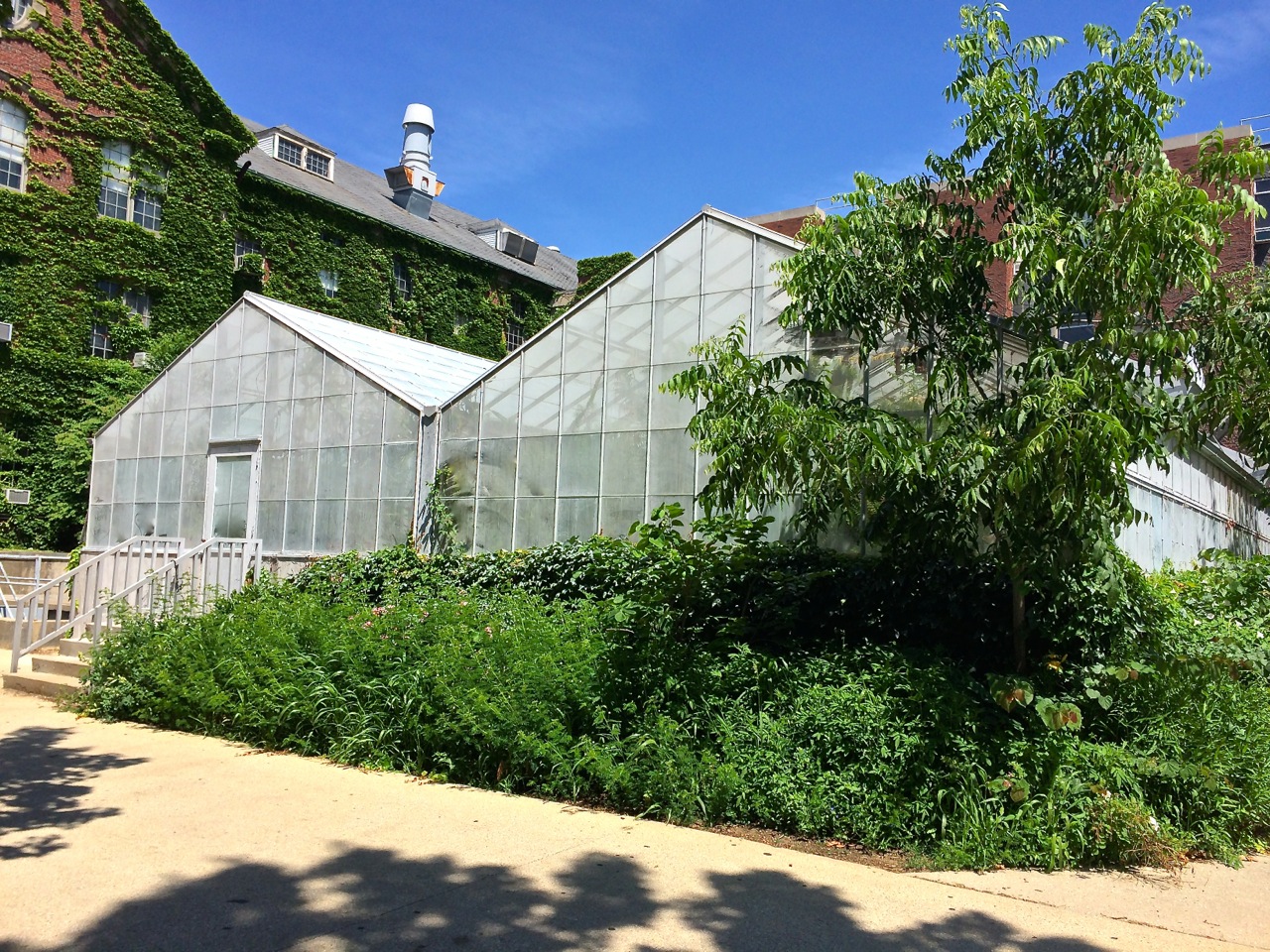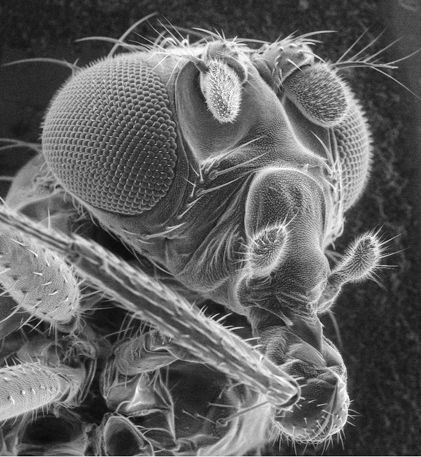Facility Types
ISU is pleased to announce the opening of our new Confocal Microscopy Core Facility. It is funded by a grant from the National Science Foundation. See the award page for more details
Leica TCS SP8X-FALCON Confocal Microscope (2019-). This core facility is available for users internal or external to ISU.
SP8 Confocal Facility information page: about.illinoisstate.edu/confocal/
Located in the Science Lab Bldg, College & Fell Av., Normal IL 61790
Contact Kevin Edwards for confocal questions or assistance.
Scheduling: Once you are approved to use the confocal, Dr. Edwards will provide a link to the online reservation calendar (contact him via e-mail).
For research with microbes and algae to plants and animals we have a range of facilities for experimental research where controlling the environmental conditions is key.
Aquarium Room
For fish and shellfish
Includes a 4,800 liter Fresh and Saltwater tank system for sea creatures
Incubators
For bacteria, fungi, and flies
EGC Growth Chambers
For algae and plants
Research Greenhouses
Our school has professional staffed greenhouses for plants
Vertebrate Animal Care
ISU maintains a staffed, centralized vivarium for housing many vertebrate species used in research and teaching.
We use diversity of natural areas and field stations throughout Illinois and neighboring states for observational and experimental studies. Representative sites are listed below. Some of the field and laboratory equipment is listed.
Representative Research Sites
Banner Marsh
Natural marsh along the Illinois river used for research on the physiological ecology of turtles
Mackinaw Study Area
Forest area in north-central Illinois and site of long-term research on the ecology and behavior of house wrens (Troglodytes aedon). For more information, click here.
Native Prairie Remnants
Many prairie preserves representing the history diversity of prairie types are used for observational studies on effects of habitat fragmentation and deer impacts on communities
Many of these remnants are own and managed by the IL DNR.
Visit their website for more information.
ParkLand Preserves
Mostly forest areas where research has focused on ecology of container-dwelling mosquitos, house wrens, and invasive plants
For more about ParkLands preserves visit their website.
Reconstructed Prairies
Replanted prairies used for more experimental and longer-term studies where some have focused on the ecology of parasitic plants.
Tyson Research Center
Located in Eureka, MO, west of St. Louis, this is the field station of Washington University, St Louis. It is used for experimental studies of ecology of container-dwelling mosquitoes
For more about the Tyson Research Center visit their website
Representative Equipment
Digital Video Equipment
For recording of animal behavior in field and lab studies
A Diversity of Environmental Sensors
For electronic recording temperature, light and other measurements
Li-Cor Li-6400 Portable Photosynthesis System
Lachat Flow Injection Analysis System and Ion Chromatograph
For chemical analysis of soils and water
Ashing and drying ovens
The Biological Sciences Greenhouse provides a place for plants to grow. There's lots of sunlight.
Equipment Summary:
- Sunlight
- Water
- Seeds
- Various temperature control devices

Our school has preserved collections of insects, birds and plants. These on-going collections are a valuable resource for assessment of the impacts of environmental changes.
John Wesley Powel and Dale Birkenholz Natural History Collections
Collections from 1867 of vertebrates including: fish, herps, birds and mamals. For more information see Dr. Capparella's website who is the curator of this collection.
Entomological Research Collection
A diversity collection of invertebrates
George S. Vasey ISU Herbarium
Collection of over 50,000 specimens of plants dating back to 1859. For more information see Dr. Armstrong's website who is the curator of this collection
Our school has extensive microscopy facilities and training for graduate students.
The Biological Sciences Microscopy Facility provides a range of instruments for light and electron microscopy, including a new, state-of-the-art Scanning Electron Microscope.
Here is a brief summary of the equipment in the Facility:
- Scanning Electron Microscope
- FEI Quanta 450 tungsten environmental scanning electron microscope with Oxford Inca 250 EDS. Funding by the National Science Foundation.
- Transmission Electron Microscope
- Zeiss EM10
- Collection of Light Microscopes
- Including Leica DMRBE equipped with darkfield, DIC, and phase contrast as well as fluorescence filter sets for UV, blue, green and GFP excitation
- Confocal Microscope Funding by the National Science Foundation.
- Pelco CPD2 critical point dryer
- Hummer 6.2 sputter coater
- Denton DV-502 vacuum evaporator
- Pelco 3450 microwave oven with temperature probe and load cooler
- Leica Ultracut UCT ultramicrotome
Many Faculty Research Labs have other microscopes for their particular uses, including:
Zeiss Axiovert inverted microscope w/ Narishige microinjector, needle puller and grinder
More Scope Information
- Leica SP2 laser scanning confocal system
- Spinning disc confocal microscope for live cell imaging, with Yokogawa CSU-X1 scanning unit and 488 and 561 nm lasers, on Leica inverted microscope
- Stereo dissecting microscopes: Leica MZ9.5 stereomicroscope w/ plan apo objective and Leica MZ8 fluorescence stereomicroscope outfitted with a filter wheel for green and red fluorescence detection. A DFC300FX Leica cooled color low-light CCD camera mounts on either microscope for digital image collection. For dissecting microscopes usage information, please contact Dr. Kevin Edwards.
Here are some examples of the equipment available for use by our faculty and their students for techniques in molecular and cellular biology.
- Phosphorimager: Quantifiable digital imaging of radioactive samples
- AB 7300 Real-time PCR
- DNA microarray scanner
- Steris Amsco Autoclave, Dishwasher and Drier
- PTI QuantaMaster Fluorometer
- Techne Hybridization Oven/Incubator HB-1D
- Typhoon FLA7000IP Modular biomolecular imager
- GenePix Professional 4200A microarray scanner
- Thermo French Press
- Ultracentrifuges and centrifuges including:
- Beckman Avanti J-25I and J-26S centrifuges
- Beckman XL-90 ultracentrifuge
- Beckman TL-100 tabletop ultracentrifuge
- BD FACSCalibur flow cytometer
- cell sorting
- HPLC
- Tissue culture hoods
- CO2 incubators
- Beckman LS 6500 Scintillation counter
- Biotek Elx800Uv microplate readers
- Eppendorf Mastercycler Thermocycler
- Tecan Spark microplate reader
- Thermo NanoDrop 2000C Spectrophotometer
- UVP Epi Chem Darkroom with MegaCam 810 CCD camera
- UVP white/UV transilluminator with CCD camera
- UVP EC3 Imaging System
- Research / Instruction Cold Room
- VersaMax microplate reader
Here are some of the key equipment for use by our faculty and their students in neuroscience.
- Fluorescence microscope with high-speed camera and fixed stage
- live cell imaging (Calcium imaging and voltage-sensitive dye imaging)
- Stereoscope with fluorescence and video capture
- used for behavioral observations and optical imaging
- Inverted microscope for anatomical studies
- Intracellular and extracellular recording amplifiers
- measures neuronal activities
- Voltage clamp, current clamp, patch clamp and dynamic clamp systems
- measures ionic currents in cells
- In vivo electrophysiology system
- for studying neuronal activity in living animals
- Electrophoresis rig for gels
- Microinjection/ picospritzer
- for injecting DNA/RNA and dyes into cells or tissue
- Laser-photoablation to selectively disable neurons
- Thermocycler for amplifying DNA
- QM-4 fluorimeter
- Variety of high speed & ultra-centrifuges, micro centrifuges
- Triaxial magnetic coil system for magnetic field manipulation in behavioral experiments
- Unix and PC clusters for computer modeling
- A 32 channel EEG/ERP system for monitoring brain activity
- An eye-tracker for monitoring eye movements and pupil size
- Voltammetry rig to measure in vivo changes of neurotransmitter release
- Implantable voltammetry device and stimulator
- for controlling neurotransmitter release from dopaminergic neurons
For use in teaching we have a diversity of living and preserved organisms
Felmley Greenhouses
These greenhouses have a wide diversity of plants with a focus on tropic and economically important plants
George S. Vasey ISU Herbarium
Collection of over 50,000 specimens of plants dating back to 1859. For more information see Dr. Armstrong's website who is the curator of this collection
John Wesley Powel and Dale Birkenholz Natural History Collections
Collections from 1867 of vertebrates including: fish, herps, birds and mammals. For more information see Dr. Capparella's website who is the curator of this collection.
